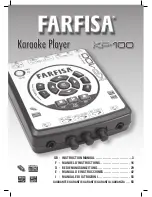
8
Not electrically conductive
Plastics have an excellent reputation as insulators in the electrical industry, e.g. HDPE cable protection
ducts, cast resins, insulating paint etc.
Sealing material
Although the chemical resistance of the seal does not equal that of Geberit HDPE, there is no risk
of the seal being destroyed because the rubber ring is installed under compression on all sides and
therefore cannot swell. In addition, the wetting factor of the rubber ring in the joint is very low. Many
years of experience has shown that the sealing material can endure even the harshest conditions.
NB: Such conditions do not occur in drainage pipes.
Solar radiation
Geberit HDPE pipes are protected against ageing and embrittlement caused by UV rays by the
addition of approximately 2% carbon.
Introduction
Geberit Drainage Systems
Behaviour in fire
Geberit HDPE and Geberit Silent-db20 are flammable materials in open combustion. They have
however been installed throughout Europe for over 40 years and, when installed in accordance with
local regulations, present no greater risk of fire propagation than similar plastic based systems. Use
with Geberit fire collars is recommended and these should be installed in strict accordance with the
instructions provided.
Joint integrity
Many years of experience with welding Geberit HDPE pipes have shown that butt welds do not give any
problems as the welding parts are circular on the inside and do not add to the normal risk of blocking.
Chemical resistance
Because of its paraffinic structure, Geberit HPDE and Geberit Silent-db20 are highly resistant
to chemicals. Their resistance can be summarised briefly as follows: Geberit HDPE and Geberit
Silent-db20 are insoluble in all inorganic and organic solutions at 20°C. Geberit HDPE and Geberit
Silent-db20 are only soluble in aliphatic and aromatic carbons and their chlorinating products at
over 90°C. The material will be attacked by heavily oxidised media (conc. HN0
3
, conc. H
2
SO
4
)
when exposed over long periods at room temperature. See chemical resistance charts on pages
64–72 for more information.









































